There are most rarest birds in the world. The planet is home to a vast number of incredible birds with unique features that we take for granted.
We see them on television shows, we hear about them in magazines and we see them in real life.
There are species that are so rare that even though there may be an estimated population size of less than 1,000, a huge majority of that population would be lost in the next 15 years.
Here is the following list is a compilation of the 10 rare birds names with pictures.
Cebu Flowerpecker [No-10]
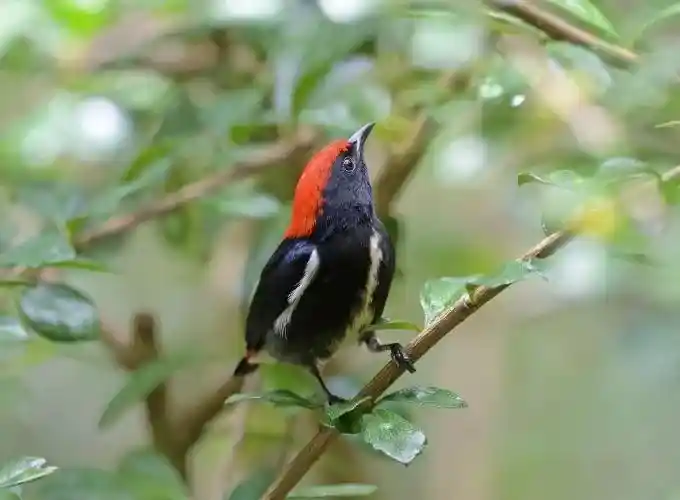
Scientific Classification of the Cebu Flowerpecker
- Scientific Name: Dicaeum Quadricolor
- Kingdom: Animalia
- Phylum: Chordata
- Class: Aves
- Order: Passeriformes
- Family: Dicaeidae
- Genus: Dicaeum
- Species: Dicaeum Quadricolor
- Common Name: Cebu Flowerpecker
Cebu Flowerpecker is a species of bird in the Dicaeidae family. It is endemic to Cebu and Bohol islands in central Philippines.
Its natural habitats are subtropical or tropical moist lowland forests and subtropical or tropical moist montane forests. It was previously thought to be extinct, but was rediscovered in 2007.
The bird’s name refers to its favourite food: flowers. They particularly like hibiscus and kamuning flowers which they can reach by perching on tall branches.
Kamuning trees are now planted at Silliman University, where it was discovered nesting in March 2006, to try to protect them from extinction.
This rare bird has been selected as one of BBC’s Wonderful creatures series five days’ worth of programming looking at different aspects of animal life around the world.
Due for transmission from 1st April 2008.
New Caledonian Owlet-Nightjar [No-9]
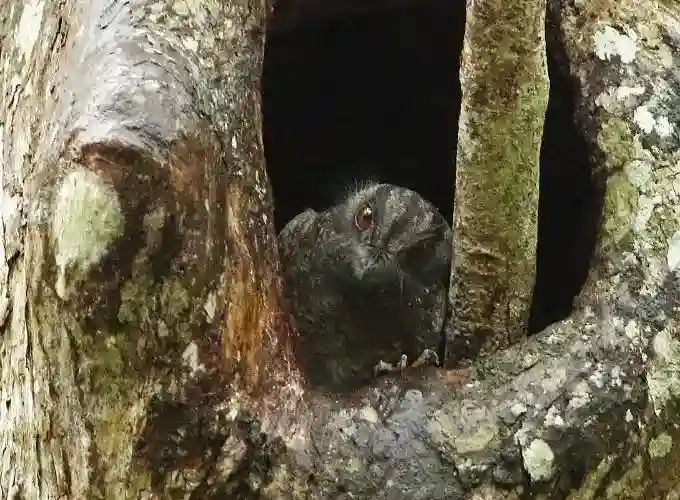
Scientific Classification of the New Caledonian Owlet-Nightjar
- Scientific Name: Aegotheles Savesi
- Kingdom: Animalia
- Phylum: Chordata
- Class: Aves
- Order: Aegotheliformes
- Family: Aegothelidae
- Genus: Aegotheles
- Species: Aegotheles Savesi
- Common Name: New Caledonian Owlet-Nightjar
New Caledonian Owlet-Nightjar the extraordinary little bird is found in a single, isolated location, and is listed as critically endangered by BirdLife International.
The total population is estimated to be no more than 400.
Habitat loss and destruction have devastated numbers of both birds and their food sources, with many species of trees in rapid decline.
Nightjars are relatively poor fliers, so habitat fragmentation can have devastating consequences for them.
Captive breeding programmes have been launched in an attempt to protect numbers of these amazing creatures.
The New Caledonian Owlet-Nightjar is listed as Critically Endangered by Birdlife International.
Due to ongoing loss of forest habitat on Grande Terre and ongoing predation from introduced mammals including rats.
Antioquia Brush Finch [No-8]
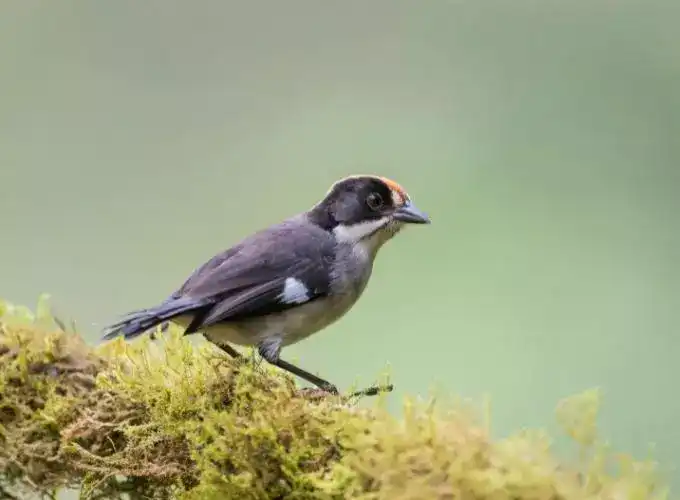
Scientific Classification of the Antioquia Brushfinch
- Scientific Name: Atlapetes Blancae
- Kingdom: Animalia
- Phylum: Chordata
- Class: Aves
- Order: Passeriformes
- Family: Passerellidae
- Genus: Atlapetes
- Species: Atlapetes Blancae
- Common Name: Antioquia Brushfinch
Antioquia Brushfinch is found in arid areas in northeastern Colombia.
It’s plumage varies from sandy yellow to light brown.This bird has a long narrow bill, which helps it reach small seeds and berries.
The range of its natural habitat is being reduced by human settlement, fires and hurricanes.
These birds feed mainly on seeds and berries, especially those of eucalyptus trees; they will also eat insects when other food sources are scarce.
They’re one of only six species that can digest eucalyptus seeds, thanks to bacteria in their stomachs that make short work of cellulose.
Like most brush finches, these birds forage for food individually rather than as groups not exactly gregarious. If you look closely, though.
You might find up to nine of them at a time brush finches often form mixed-species flocks with other small birds like sparrows and wrens as well as larger species like jays and woodpeckers.
Their population size is not known. There are efforts underway to protect these imperilled birds in their native habitat (the Colombian government has established several protected nature reserves).
But there are still many threats posed by humans encroaching on or accidentally burning down or taking over land where they live.
Stresemann’s Bristlefront [No-7]
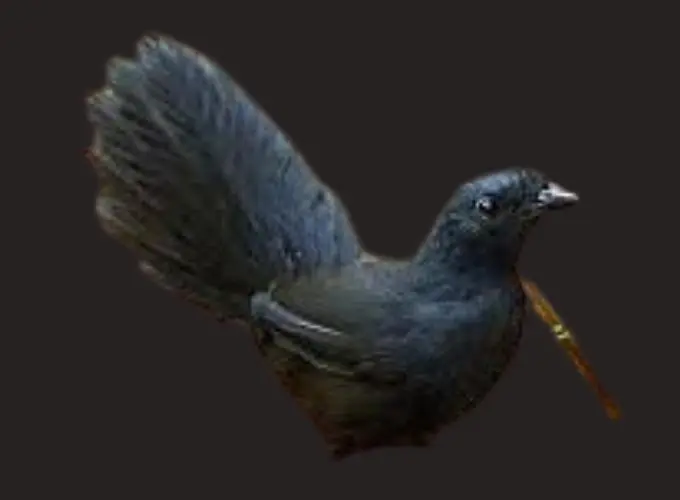
Scientific Classification of the Stresemann’s Bristlefront
- Scientific Name: Merulaxis Stresemanni
- Kingdom: Animalia
- Phylum: Chordata
- Class: Aves
- Order: Passeriformes
- Family: Rhinocryptidae
- Genus: Merulaxis
- Species: Merulaxis Stresemanni
- Common Name: Stresemann’s Bristlefront
Stresemann’s Bristlefront is a small, relatively long-legged and long-billed bird that is mainly black with a white breast, grey crown and nape, red eyes and some orange on its wings.
The female has shorter legs than male. Little is known about their behaviour but they feed on small invertebrates in forest clearings where they will join mixed species flocks.
Their biggest threat to survival are feral cats, which hunt these birds for food. They don’t build nests, instead lay eggs directly onto tree branches at medium heights.
The only known place they can be found in Canada is a single location on Vancouver Island.
Blue Eyed Ground Dove [No-6]
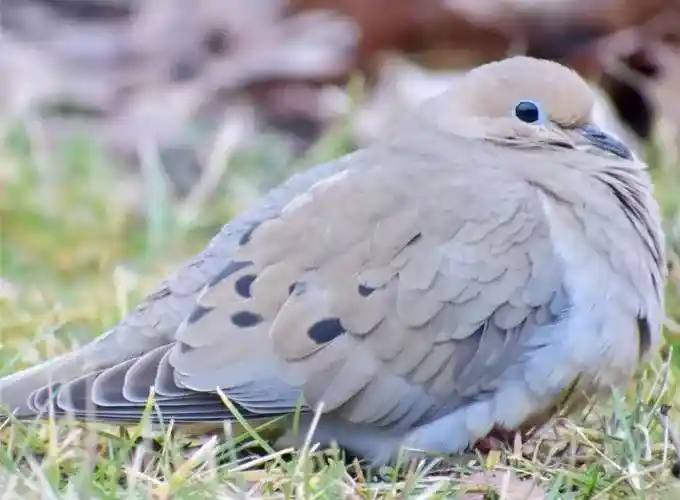
Scientific Classification of the Blue Eyed Ground Dove
- Scientific Name: Columbina Cyanopis
- Kingdom: Animalia
- Phylum: Chordata
- Class: Aves
- Order: Columbiformes
- Family: Columbidae
- Genus: Columbina
- Species: Columbina Cyanopis
- Common Name: Blue Eyed Ground Dove
Blue Eyed Ground Dove. When you’re looking for a truly rare bird, your best bet is to start looking in remote areas.
That’s exactly what was done in 2005 when scientists discovered six Blue Eyed Ground Doves in Haiti. Before then, these creatures had never been seen before.
With a bright blue eye and white breast, they look like something out of a children’s storybook. It took four years after their discovery for these birds to reproduce.
While there are still only 50 of them living in captivity (and another 50 or so released into the wild), it marks an important moment for conservationists.
If we can save even one species from extinction, why not work toward saving all vulnerable creatures? Because that would make us all happy.
Kakapo [No-5]
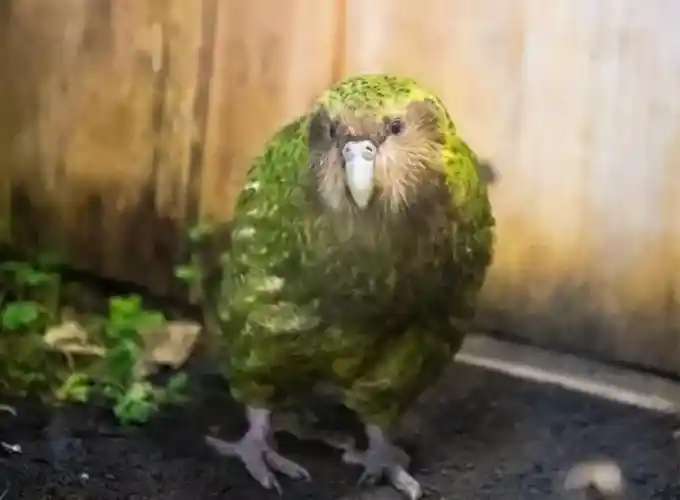
Scientific Classification of the Kakapo
- Scientific Name: Strigops Habroptilus
- Kingdom: Animalia
- Phylum: Chordata
- Class: Aves
- Order: Psittaciformes
- Family: Strigopidae
- Genus: Strigops
- Species: Strigops Habroptilus
- Common Name: Kakapo
Kakapo is an endangered species of parrot that lives in New Zealand. Kakapo are endemic to New Zealand, and have been found nowhere else in the world.
The average adult kakapo weighs about 4 pounds, but males can be more than twice as heavy as females, with a population range of from 1-5 pounds.
They live for around 40 years in captivity, although their lifespan in the wild is still unknown due to human encroachment on their habitat; these birds are nocturnal and largely flightless.
So they are particularly vulnerable to predators such as cats and rats. In fact, only around 127 wild individuals remain in New Zealand’s Fiordland National Park.
Making them one of Earth’s rarest bird species. There are also one hundred individuals kept in captive breeding programs across North America and Europe.
Although there has been significant progress toward stabilising kakapo populations, which were once down to just 50 birds.
The future survival of these unique creatures remains uncertain without additional conservation efforts.
As recently as 1990, when intensive management programs began, it was thought that humans would never again see any living kakapos now there’s hope for recovery.
Walden’s Hornbill [No-4]
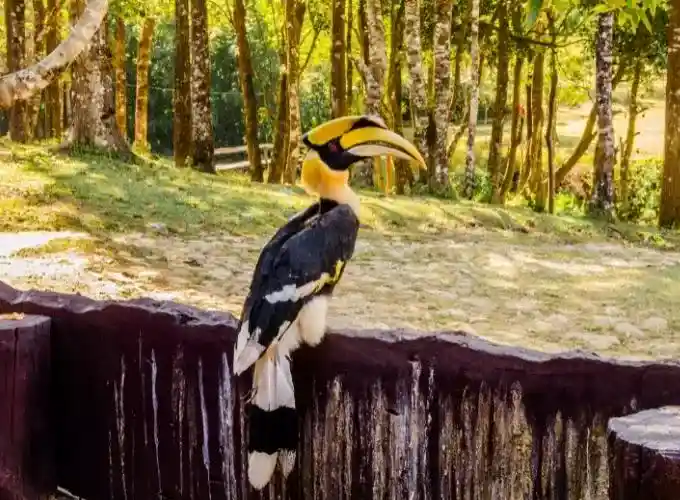
Scientific Classification of the Walden’s Hornbill
- Scientific Name: Rhabdotorrhinus Waldeni
- Kingdom: Animalia
- Phylum: Chordata
- Class: Aves
- Order: Bucerotiformes
- Family: Bucerotidae
- Genus: Rhabdotorrhinus
- Species: Rhabdotorrhinus Waldeni
- Common Name: Walden’s Hornbill
Walden’s Hornbill, also known as Helmeted Hornbill, lives in Asia and Australia.
There are only around 150 to 200 specimens of these birds left in nature, making them one of Earth’s rarest species.
Considered a vulnerable species by BirdLife International and classified as endangered by IUCN Red List, these birds live in dense humid forests in Indonesia, Malaysia and Papua New Guinea.
Unfortunately they are at risk of extinction due to deforestation and poaching for their unique casques (the curved bill).
They can reach up to 20 inches in length with a 30 inch wingspan. Other names: Helmeted Hornbill / Blyth’s hornbill / Mindanao Brown hornbill / Palawan hornbill (full long list).
Kagu [No-3]
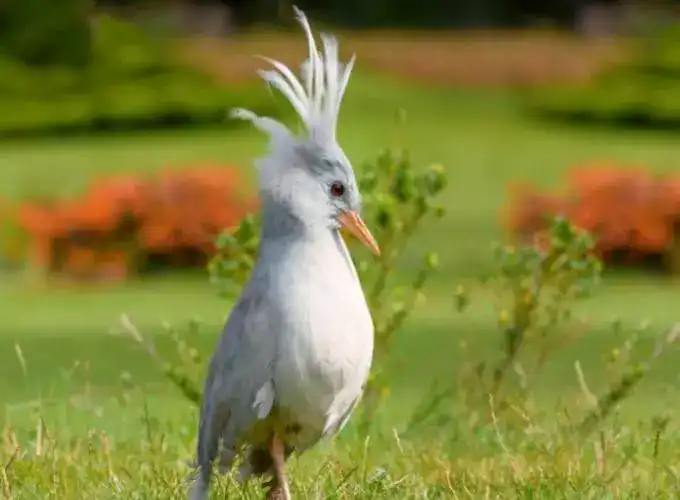
Scientific Classification of the Kagu
- Scientific Name: Rhynochetos Jubatus
- Kingdom: Animalia
- Phylum: Chordata
- Class: Aves
- Order: Eurypygiformes
- Family: Rhynochetidae
- Genus: Rhynochetos
- Species: Rhynochetos Jubatus
- Common Name: Kagu
Kagu are native to New Caledonia. The locals have named them the bird of paradise because they look like large, almost prehistoric birds from a long time ago.
Not much is known about their habits in the wild, but it’s assumed that they spend most of their time foraging for food on and around trees in woodlands and forests.
There are three subspecies: Queen Charlotte (or northern) kagu, Black-legged (or southern) kagu and Dwarf Kagu.
Because there is only one member of each subspecies, every individual living organism represents an entire species.
So basically, if we lose one member of these subspecies, we lose an entire species forever.
Luckily enough, all members of these subspecies are endangered, so there’s a good chance some measures will be taken before it’s too late.
Bahama Nuthatch [No-2]
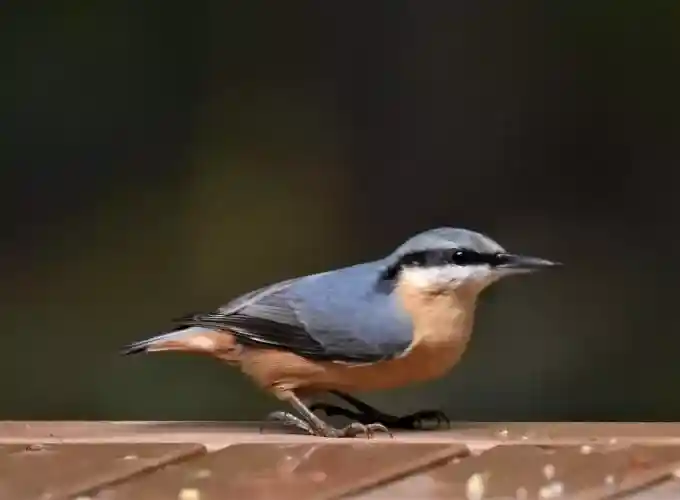
Scientific Classification of the Bahama Nuthatch
- Scientific Name: Sitta Insularis
- Kingdom: Animalia
- Phylum: Chordata
- Class: Aves
- Order: Passeriformes
- Family: Sittidae
- Genus: Sitta
- Species: Sitta Insularis
- Common Name: Bahama Nuthatch
Bahama Nuthatch bird can only be found in a few locations on Long Island and Andros Island, Bahamas.
It is still quite abundant, but their populations are continuing to decline due to habitat loss, introduced species and global warming.
This bird has mainly brown plumage with some yellow feathers. They live at low altitudes where they can be found in forests with yew trees as well as slash pine plantations.
These birds feed primarily on insects they find on tree trunks or leaves. During the breeding season they can be seen hanging upside down from branches in order to reach leaves below them.
A young Bahama Nuthatch might stay near its parents for up to one year after leaving the nest to learn how to fly, find food and establish its own territory.
Philippine Dwarf Kingfisher [No-1]
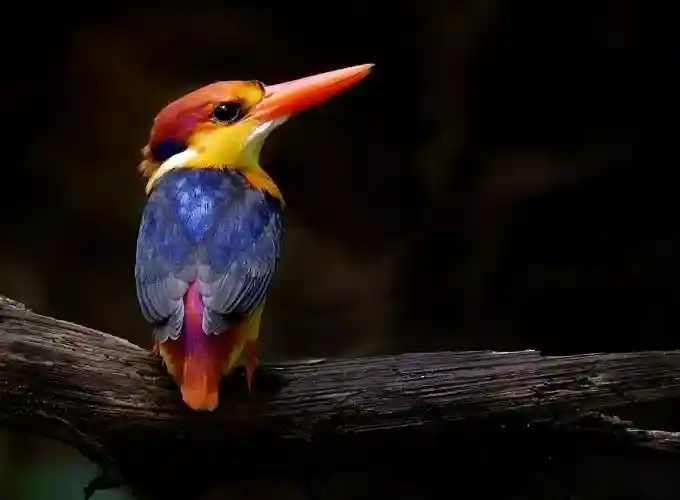
Scientific Classification of the Philippine Dwarf Kingfisher
- Scientific Name: Ceyx Melanurus
- Kingdom: Animalia
- Phylum: Chordata
- Class: Aves
- Order: Coraciiformes
- Family: Alcedinidae
- Genus: Ceyx
- Species: Ceyx Melanurus
- Common Name: Philippine Dwarf Kingfisher
Philippine Dwarf Kingfisher is smallest bird in Asia and one of the most rarest birds in the world, is one of 13 new species discovered by conservationists in recent years.
The Philippine Dwarf Kingfisher is a truly diminutive bird, its entire length is only 20 cm (7.9 inches), with females slightly larger than males.
It is all blue above, with a yellow underbelly and black barring below. Uniquely among kingfishers.
It feeds primarily on insects and arthropods, which it catches by running along branches and spider or centipede.
Like lures prey into striking range by feigning attacks from its perch while jumping up vertically as well as laterally to intercept prey.
They tend to nest colonially in burrows; nests were found at different depths (between 5m and 8m). This bird’s population is endangered because their habitat has been destroyed by deforestation.
Since 2004, 11 areas encompassing 80 square kilometres have been set aside for protection, thanks largely to efforts led by Dr Thierry Work at IRD National Institute for Research Development.
Although 40 percent of suitable habitat remains outside these protected areas, intensive survey work will be required to determine whether additional populations exist elsewhere.
Conclusion:
That is my list of top 10 rarest birds in the world. I hope you will be able to find one of these beautiful creatures during your next vacation.
If not, do not give up and continue looking for them till you can say: I saw it. I wish all of you a happy bird-watching year.
I hope you enjoyed our article about rarest birds in the world. If yes, then do share these articles with your loved ones, family, and friends.
Thank you for Reading!

